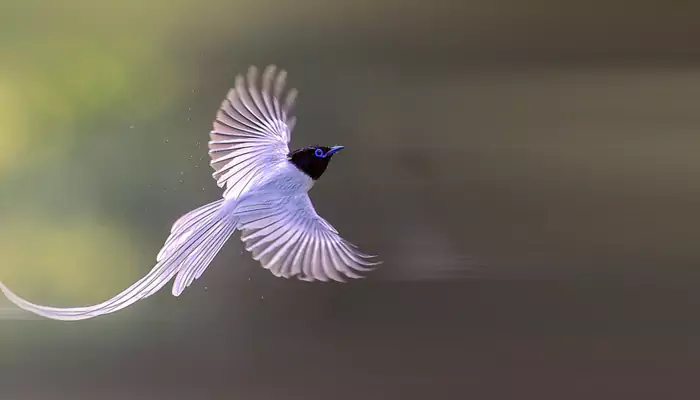
Get to know the migratory birds found in the Indian subcontinent.
The Indian subcontinent, with its diverse habitats ranging from lush forests to arid deserts and coastal wetlands, serves as a crucial stopover for numerous migratory bird species. These avian visitors travel thousands of miles across continents, adding a splash of colour and vibrancy to the region's natural landscape. Here are some exotic migratory birds that grace the Indian subcontinent, each with its own unique characteristics and migratory patterns. Read on!
Siberian Crane
The Siberian Crane is one of the most iconic migratory birds that visit India during the winter months. Recognized for its striking white plumage with black wingtips, this crane breeds in Siberia and migrates thousands of kilometres to spend the winter in the wetlands of northern India, particularly in states like Rajasthan and Gujarat. Their arrival is eagerly awaited by bird enthusiasts, as they gather in small numbers, making each sighting a precious experience.
Amur Falcon
Known for its spectacular mass migration, the Amur Falcon travels from its breeding grounds in eastern Asia, primarily in China and Mongolia, to southern Africa, passing through the Indian subcontinent. These small, agile falcons are notable for their greyish-brown plumage with distinctive white underparts and red legs. During their migration, they form large flocks that roost in tall trees and feed on insects, making them a captivating sight for bird watchers in northeastern India.
Asian Paradise Flycatcher
The Asian Paradise Flycatcher is a stunning migratory bird that adds enchantment to the forests and gardens of the Indian subcontinent. During the breeding season, the males don a long, flowing white tail and chestnut-coloured plumage, while the females sport a more subdued brownish-grey plumage. These graceful birds breed in parts of northern and central India and migrate to southern India and Sri Lanka during the winter, where they feed on insects and berries amidst dense foliage.

Bar-headed Goose
Renowned for its incredible high-altitude migration, the Bar-headed Goose is considered one of the world's highest-flying birds, crossing the Himalayas on its journey from Central Asia to the Indian subcontinent. These geese have adapted to thrive in oxygen-thin environments, and they winter in the wetlands and lakes of northern India, including Ladakh and Uttarakhand. Their distinctive markings, with a light grey body and black bars on the neck, make them easily recognizable during their seasonal visits.
Common Rosefinch
A vibrant visitor to the Indian subcontinent, the Common Rosefinch brightens up its surroundings with its rosy-red plumage during the breeding season. Originating from the forests and scrublands of Europe and northern Asia, these finches migrate southwards to escape the harsh winters, reaching northern and central India. They are often found in Himalayan foothills and open woodlands, where they feed on seeds and occasionally insects, showcasing their colourful breeding plumage.
Greater Flamingo
While not strictly a migrant in the traditional sense, the Greater Flamingo undertakes seasonal movements within the Indian subcontinent, driven by changes in water levels and food availability. These tall, elegant birds with their pinkish-white plumage and long necks inhabit shallow coastal wetlands, salt pans, and inland lakes across India, particularly in Gujarat, Maharashtra, and Rajasthan. Their graceful presence and synchronised flock movements create a spectacle that attracts bird watchers and photographers alike.
The Indian subcontinent's role as a vital migratory route and wintering ground for these exotic birds underscores its importance in global avian conservation efforts. Whether you're a seasoned bird enthusiast or a casual observer, exploring the world of migratory birds in the Indian subcontinent offers a profound connection to nature's wonders and the intricate web of life that spans continents.











.webp)
